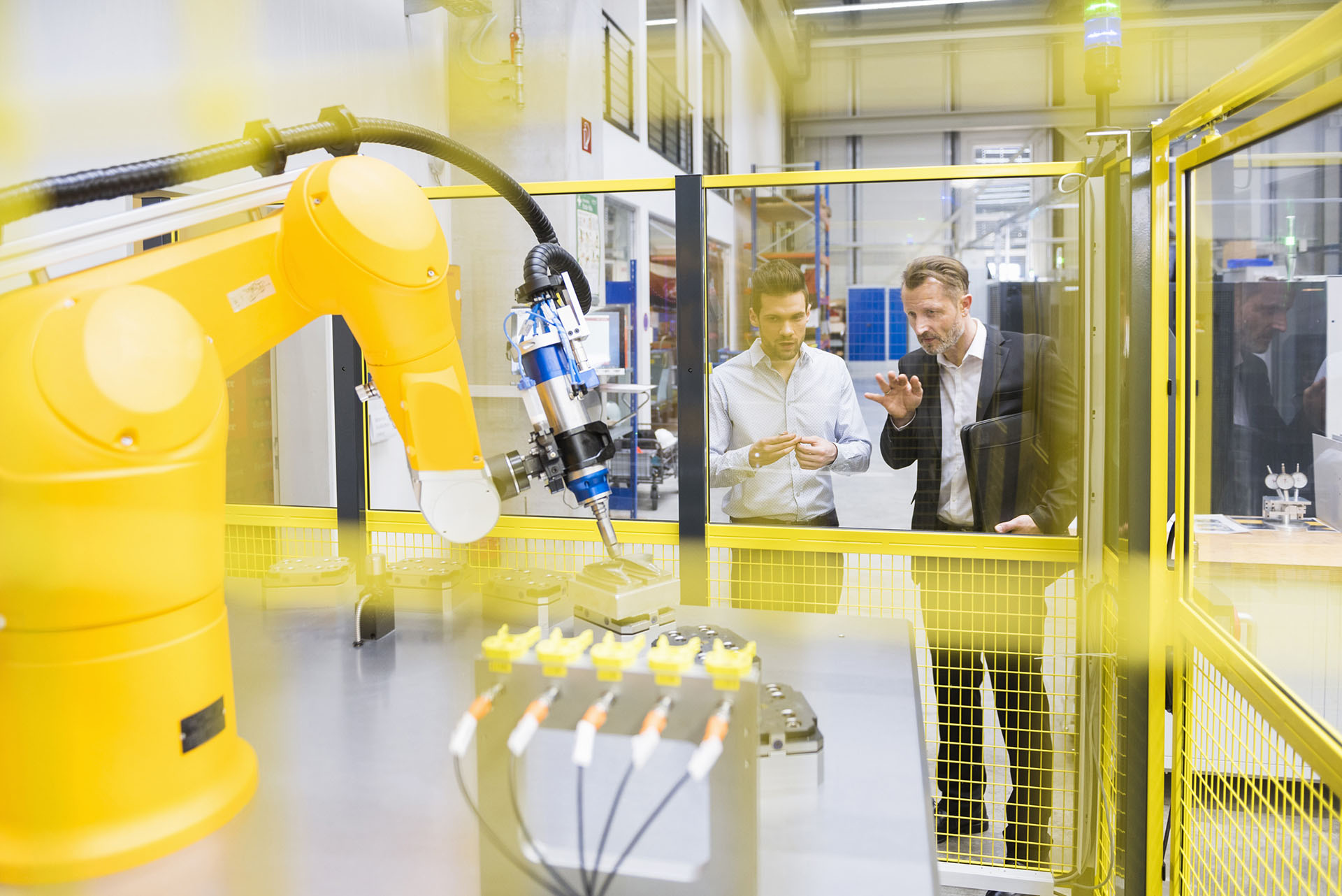A Radar for Industrial Robots May Guide Collaboration with Humans

Working alongside an industrial robot can be frustrating and even downright dangerous. But a new sensing system could make human-robot collaboration a cinch.
Humatics, an MIT spinout, is developing an indoor radar system that should give robots and other industrial systems the ability to track people’s movements very precisely. This could make industrial systems significantly safer, make it possible to track worker performance in greater detail, and lead to more effective new forms of collaboration between people and machines.
“We very much see this enabling robots to live in human environments,” says David Mindell, a professor in the aeronautics and astronautics department at MIT, who is the company’s cofounder and CEO.
Existing sensors, including cameras and depth sensors, are often affected by lighting and offer only a rough idea of a person’s position in three-dimensional space. Emerging safety systems allow people to work in closer proximity to powerful robots, but they shut these systems down completely if a person moves too close. By tracking a person’s motions very precisely, the new system could make it possible for a powerful robot to work in concert with a person, perhaps handing something to a human coworker. “You could get rid of the cages around big robots,” Mindell says.
The technology may offer a clue as to how manual work will evolve over the coming decade or so. Besides letting robots and humans collaborate much more effectively, it could be used to track and improve the performance of human workers. In a warehouse, for example, it might be possible to identify ways in which workers’ actions could be made more efficient or less repetitive. “There are so many places where this can be applied,” Mindell says.
While there is plenty of talk about robots replacing people in many settings, Mindell believes that automation will be more effective when combined with human effort. He outlined this theory in a book, Our Robots, Ourselves, published in 2015.
Humatics calls its tracking technology the Humatics Spatial Intelligence Platform. The company’s radio-frequency tracking hardware is capable of tracking multiple transponders at up to 30 meters with millimeter-scale precision. A software system can provide analytics on workers’ movements, and an application programming interface enables others to build applications.
The technology might improve the efficiency of an industrial manufacturing line because workers could grab something a robot has finished working on without fear of being injured. The company has not announced the cost of the system, but it claims that it is significantly cheaper than existing alternatives.
Collaboration between robots and humans is becoming increasingly important across the manufacturing and fulfillment industries. While older industrial robots were too dangerous to work alongside, some lightweight systems can now work safely next to people on factory lines. But these machines do not track a person’s movements, and they are limited because they cannot use much force.
Meanwhile, inside many warehouses and fulfillment centers such as those operated by Amazon, robots are increasingly helping people move items around more efficiently (see “Inside Amazon’s Warehouse: Human-Robot Symbiosis”).
The companies that have invested in Humatics so far offer some indication of just how broad the applications could be. A series A financing round worth $18 million drew investors including Lockheed Martin Ventures and Airbus Ventures. Both Lockheed and Airbus are exploring greater use of robotics on their manufacturing lines.
“We see Humatics’s technology as no less than a tectonic shift in position and motion tracking,” Thomas d’Halluin, chief executive officer of Airbus Ventures, said in a statement. “Its quantum leap in precision unlocks powerful potentials for a wealth of new applications.”
Mindell previously developed ultra-precise sonar for underwater robotic systems. And he is an expert on the use of automation in aerospace and aeronautics. The company’s founding advisors include Bob Ballard, an ocean explorer who discovered the Titanic shipwreck, and Dave Scott, an Apollo astronaut.
Keep Reading
Most Popular
Large language models can do jaw-dropping things. But nobody knows exactly why.
And that's a problem. Figuring it out is one of the biggest scientific puzzles of our time and a crucial step towards controlling more powerful future models.
How scientists traced a mysterious covid case back to six toilets
When wastewater surveillance turns into a hunt for a single infected individual, the ethics get tricky.
The problem with plug-in hybrids? Their drivers.
Plug-in hybrids are often sold as a transition to EVs, but new data from Europe shows we’re still underestimating the emissions they produce.
Stay connected
Get the latest updates from
MIT Technology Review
Discover special offers, top stories, upcoming events, and more.